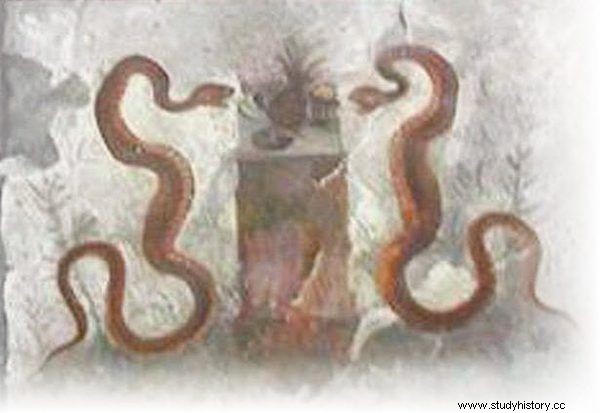Could the frescoes in Pompeii and the treasures of the pharaohs have anything to do with overseas travel? And yet! An element on them suggests that it may be time to rewrite the textbooks. Or at least that's what one Polish author says.
One of the frescoes in the Roman-era House of Epheba shows two snakes writhing around a pedestal with a pineapple on it. The performance itself may be a bit peculiar, but the untrained eye will not see anything shocking about it. Oh, another fad of the inhabitants of Pompeii, who apparently appreciated the exotic fruit. Or maybe the idea for the fresco came about during one of the sumptuous feasts that the ancient Romans liked so much?
Polish writer and traveler, Jarosław Molenda, in the book "The astonishing life of fruit. From pineapple to strawberries ” argues, however, that the picture of a pineapple is worth taking a closer look at. That's because actually… it shouldn't be there at all! Most researchers and historians claim that the ancient inhabitants of the Mediterranean basin did not know this fruit.
Coming from the New World
The first European to try pineapples was reportedly Christopher Columbus. In 1493 he landed on one of the Caribbean islands where they were grown. After him, other travelers from the fifteenth and sixteenth centuries "discovered" this fruit resembling a cone with delight. And, as Molenda points out, everyone was convinced that he came from America. It was not brought to Europe until after 1500. But how then to explain the fact that pineapple had already been on the Roman plate more than a thousand years earlier?

The pineapple in the fresco in the House of Ephesus in Pompeii shows two snakes twisting around a pineapple. Is this evidence of the Romans' trade with the New World? Illustration from the book "The Amazing Life of Fruit. From pineapple to strawberries ” .
The Pompeii fresco is by no means the only ancient depiction of this extraordinary fruit that Molenda tracked down. The researcher found a similar "cone" on a mosaic dating back 2,000 years, which is now in the Museo Nazionale Romano. And not the end - the pineapple-like plant also appears among the exhibits of the Cairo Museum from around the fourteenth century BC. This would mean that not only the Romans but also the ancient Egyptians ate juicy fruit.
Author "The Amazing Life of Fruit. From pineapple to strawberries ” believes that solving the mystery of the mysterious presence of pineapple on ancient tables is simple. After all, the Romans had a sizeable fleet, which often contained ships carrying several hundred tons of cargo. Why should they not travel to the New World on board them? Molenda says we should not be afraid to make such a conclusion. As he writes:
There is still a lingering medieval view that vast oceanic expanses were an impassable barrier for the ancients, whereas the opposite was true - people from Egyptian times were able to use monsoons or sea currents, which, like rivers, carried them to overseas lands, from where exotic plants were brought to make life pleasant for the elites.

"The history books will have to be rewritten ..."
Indeed, among the ancients, there were plenty of rich people who could pay dearly for the opportunity to serve delicious culinary novelties on their table. Some of them bent over backwards to surprise and charm their guests during the feasts they organized. It was not uncommon to treat them with new fruit. Lukullus, "the greatest foodie of antiquity," reportedly brought cherries to Europe for the purpose of a feast. Is it so hard to believe that another magnate of the time would send his subordinates to find something even more impressive?
Molenda realizes that the consequences of his "pineapple" theory are revolutionary . "If the traces of this regular trade from centuries ago are unquestionably confirmed and accepted, all history books will have to be thrown away and rewritten," he admits. If that happened, the apple that hit Isaac Newton on the head would be seriously threatened as the most meritorious fruit in history.
Source:
Trivia is the essence of our website. Short materials devoted to interesting anecdotes, surprising details from the past, strange news from the old press. Reading that will take you no more than 3 minutes, based on single sources. This particular material is based on:
- Jarosław Molenda, The amazing life of fruit. From pineapple to strawberry , Bellona 2018.
